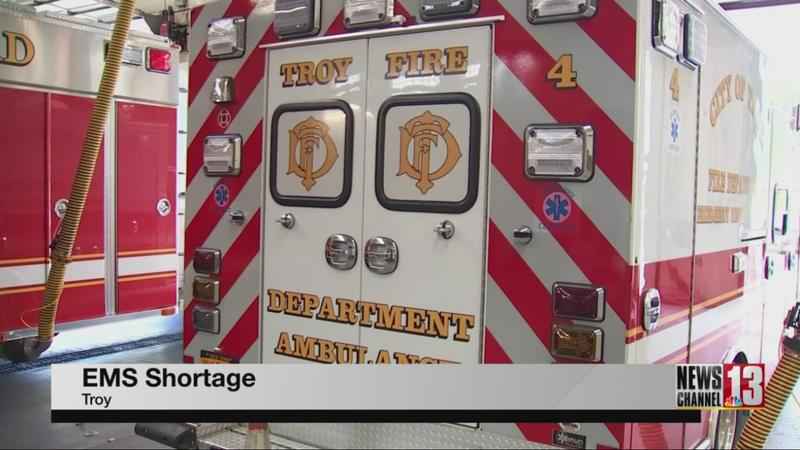Troy facing critical shortage of emergency medical workers
The president of the Troy Uniform Firefighters Association Local 86 says staffing has been an ongoing issue. He says things have gotten worse in the last year.
Wisher says they don’t have enough fire department apparatus to go out on calls. Wisher shared a photo with NewsChannel 13 that was taken Saturday night.
There were 14 ambulances at Samaritan Hospital. Many of the ambulances were from other departments they rely on for mutual aid.
Wisher says if there was something else going on that night, they wouldn’t have been able to respond. Wisher says they need more staffing to handle the call volume. He wants the city of Troy to address the staffing issue before it is too late.
"A lot of these problems aren’t problems that the city created, and they’re not problems that the fire department created, and they’re not problems that the union created, but they create problems for all of us in not us being able to properly respond to calls," said Wisher.

Deputy Mayor Monica Kurzejeski released the following statement:
"Changes made in the name of efficiency in our local hospital and health care systems—compounded by COVID protocols, hospital staffing reductions, and the closure of emergency rooms—have created a ripple effect that continues to adversely impact municipal and private ambulance services across the region. The problem is that the emergency medical facilities – for a number of reasons – are increasingly unable accept our transported patients without significant delay.
"This situation is part of a larger challenge facing our entire region. It is a systemic problem that requires a systemic solution. We need to engage with our health care partners and other municipalities to address these chronic patient intake issues that are now affecting us all. The city is ready to do that.
"This administration is committed to balancing the needs of our public safety departments, the safety of our residents and the financial impact of staffing expenditures on Troy taxpayers.”